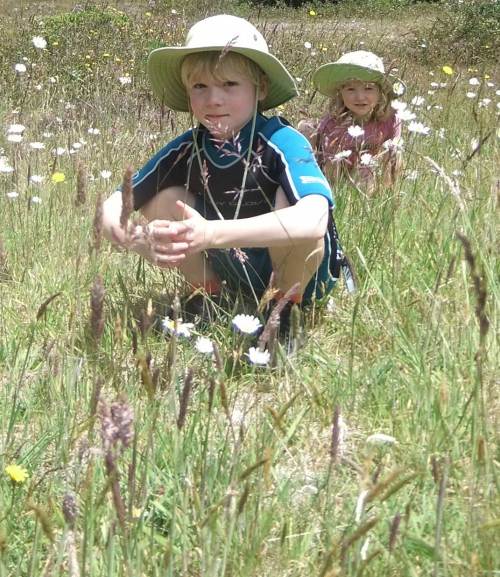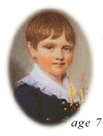A great way to get your children excited about reading is to make them the star of their own story. It’s also a great way to record all the many adventures you have together! These days anyone who has access to a digital camera can make a book; either online or at your local photo shop or chemist that has one of those photo printing booths. You can either rewrite the familiar classics with your own unique twist as I have done here , or choose to tell your own unique story.
We’re going on a tramping trip
(with William and Josie)
Concept stolen from ‘We’re going on a bear hunt’ by Michael Rosen

Josie and the red door (2010)
We’re going on a tramping trip
It’s going to be a long one
We’re looking for a taniwha
I’m not scared

William @ Craigieburn Forest Park (2008)
I’ve got my tramping boots on
I’ve got my back pack on
I’ve got my sun hat on
What a beautiful day

William @ Lewis Pass Scenic Reserve (2011)
Oh no!
We’ve reached the green and shady forest
We can’t go under it, we can’t go over it,
we can’t go around it,
we’ll have walk through it
Trip trot trip trot trip trot hop

Josie @ Lewis Pass Scenic Reserve 2011.
Were going on a tramping trip
It’s going to be a long one
We’re looking for a taniwha
I’m not scared
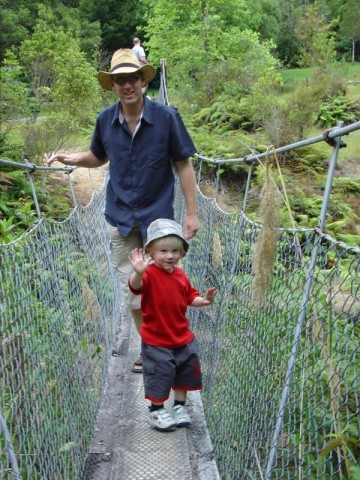
William and Dad crossing Ngatuhoa Stream (2007)
I’ve got my tramping boots on
I’ve got my back pack on
I’ve got my sun hat on
What a beautiful day
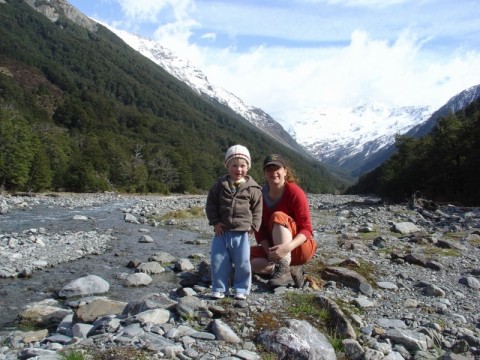
William and Mum @ Temple valley (2007).
Oh no!
Here’s a rushing braided river
We can’t go under it, we can’t go over it,
we can’t go around it, we’ll have wade through it
Link arms and wade wade wade wade

William and Josie St James CA (2011)
Were going on a tramping trip
It’s going to be a long one
We’re looking for a taniwha
I’m not scared

Hanmer Forest Park (2011).
I’ve got my tramping boots on
I’ve got my back pack on
I’ve got my sun hat on
What a beautiful day

St James CA 2011).
Oh no!
We have reached the wavy tussock grasslands
We can’t go under it, we can’t go over it,
we can’t go around it, we’ll have to go through it
Swish, swish, swish, swish

Ben Ohau (2007).
Were going on a tramping trip
It’s going to be a long one
We’re looking for a taniwha
I’m not scared

Ben Ohau (2007).
I’ve got my tramping boots on
I’ve got my back pack on
I’ve got my sun hat on
What a beautiful day

William @ Otukaikino with friends (2012).
Oh no!
Here’s an oozy, peaty wetland
We can’t go under it, we can’t go over it,
we can’t go through it, we’ll have to go around it
Squelch squelch squelch squelch

Swing bridge Aoraki/MT Cook (2009)
Were going on a tramping trip
It’s going to be a long one
We’re looking for a taniwha
I’m not scared

Family at Aoraki/Mt Cook (2009).
I’ve got my tramping boots on
I’ve got my back pack on
I’ve got my sun hat on
What a beautiful day
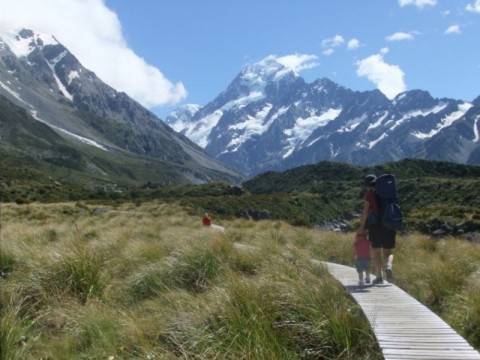
Aoraki/Mt Cook National Park (2009)
Oh no!
Here’s a big snowy mountain
We can’t go under it, we can’t go around it,
we can’t go through it, we’ll have to climb over it
Climb climb climb climb

Arthur's Pass (2011).
Were going on a tramping trip
It’s going to be a long one
We’re looking for a taniwha
I’m not scared

Josie & Ben Kura Tawhiti (2012).
I’ve got my tramping boots on
I’ve got my back pack on
I’ve got my sun hat on
What a beautiful day

William @ Kura Tawhiti 2012
Oh oh
We’ve found a scary limestone cave
We can’t go under it, we can’t go over it, we can’t go around it, we’ll have to go through it
Tip toe tip toe tip toe

William and Dad @ Cave Stream (2008).
What’s that sound?
Roar!
It’s the taniwha!

William, Josie and cousin Taylor on the Taniwha at Te Puna Quarry (2010).
Quick, run home
Over the big snowy mountain—climb climb climb
Around the oozy peaty wetland—squelch squelch squelch
Through the wavy tussock grasslands—swish swish swish
Through the rushing river—wade wade wade
Through the drippy rainforest—trip trot trip trot hop
Back home, in our front door, up the stairs and into bed.
Phew.

Josie reading "going on a tramping trip" (2012)
Read Full Post »





























